Preparedness Challenge Week 16
Thanks for joining the 2022 Preparedness Challenge!
The preparedness challenge this week is to stock up on ready-to-eat entrées. A supply of these entrée meals will be indispensable as quick meals to use in an emergency. They require either very little or no preparation at all.
What Entrées Are Best to Use in an Emergency?
There are several options for entrées: canned, frozen, dehydrated, and freeze-dried. There are pros and cons for each of these common entrée types.
What to Look for in Entrées
Look for entrées that have serving sizes of at least 200 calories and protein content of at least ten grams per serving. Don’t worry too much about them being nutritionally balanced—for short-term emergencies, it’s enough to have palatable calories.
If possible, sample any product you intend to purchase, including each entrée choice, especially before purchasing a large quantity. Also, inspect the nutrition label and the ingredient list, and check both the sodium and added sugar information on the label.
In my research I found that all types of entrées have a higher than desirable sodium content. It is difficult to find prepared foods that do not have excessive sodium. Food manufacturers add a generous amount of salt to their products to make them taste better. Although added sugar can be a problem in some foods, only small amounts of sugar are added to entrées.
How Much Is Too Much Sodium?

The 2020-2025 Dietary Guidelines for Americans recommends that Americans consume fewer than 2,300 milligrams(mg) of sodium per day—about one teaspoon. The American Heart Association suggests even less—1500 mg per day for all Americans—but especially for high risk populations. As you look for entrées, look for ones that have fewer than 700 mg of sodium.
Canned Entrées
Canned entrées, such as beef stew, chili con carne, hash, ravioli, canned soups, etc, are easy-to-use meals and can be handy in an emergency.
PROS
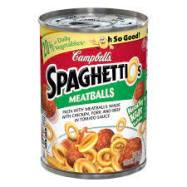
- Require no refrigeration
- Best if reheated, but can be eaten without cooking
- Great variety to choose from
- Easy to buy at a grocery store
- Inexpensive
- Don’t require water
- Can be heated in the can
CONS
- Heavier and bulkier than some options
- Require a can opener or pull-tab lids
- Shelf life is three to five years, requiring periodic replacement
- Cans may burst if they fall
- May contain excessive food additives and sodium, check the label
Frozen Entrées
Frozen entrées are another option for quick meals in an emergency. They may be packaged as individual entrées, frozen family-size main dishes, complete dinners, pizzas, etc.
PROS
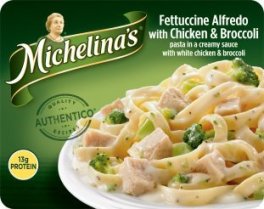
- Taste close to freshly prepared food
- Great variety to choose from
- Easy to purchase at a grocery store
- Similar to home-style menu choices
- Easy to make homemade entrées
CONS
- Vulnerable to power loss
- Costly to store
- Short shelf life of three to six months, requiring frequent replacement
- Requires thawing and heating
- More expensive than canned entrées
- May contain excessive food additives and sodium, check the label
Dehydrated Entrées
Dehydrated entrées are made of dry and dehydrated components mixed together and then packaged in four- to eight-serving packets. These “meals” typically contain rice or pasta, a few dehydrated vegetables, dairy derivatives, perhaps some imitation meat, and a long list of food-processing chemicals. They are made to simulate popular dishes and have names like cheesy lasagna, chicken-flavored rice, or pasta Alfredo.
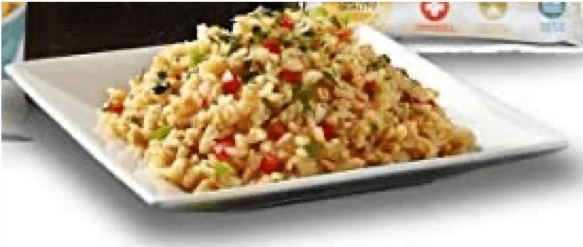
Dehydrated food storage entrées are marketed through food storage retailers and sold for long-term emergency food storage. Quite honestly, I don’t think they expect you to actually eat them…and you better hope you never have to!
PROS
- Light-weight
- Long shelf-life—25 to 30 years
- Compact, stackable storage containers
CONS
- Take ten to twenty minutes to reconstitute
- Don’t contain meat or cheese even though labels suggests they do
- Artificial taste
- Reconstituted dehydrated vegetables taste bland and have a rubbery texture
- Highly processed and may contain excessive food additives and sodium, check the label
Problems with Dehydrated Entrées
Dehydrated entrées often have small serving-sizes and are low in calories. Some people find that all the meals have a sameness and find it difficult to distinguish the taste from one pouch to the next.
Some food storage companies claim that their product is freeze-dried, but they are actually a mixture of mostly dry and dehydrated food products with maybe a few freeze-dried morsels. If the directions tell you to whisk the ingredients into boiling water and simmer for 20 minutes, the product is not freeze-dried.
The ingredients in the entrées are mostly rice and pasta, but they cost four to ten times the price of ordinary rice and pasta. They are often marketed with other food items and promoted as a “deluxe” emergency-food-storage packages. The consumer ends up paying very high prices for orange-flavored, sugary beverage mix, imitation whey milk, oatmeal, and soup mixes.
Freeze-Dried Entrées
Freeze-dried foods are flash frozen and the cellular structure of the food remains unchanged.
The result is a sponge-like, porous food that keeps its original size and shape both when dry and when reconstituted with water.

A truly freeze-dried entrée is first prepared as a complete dish, such as beef stroganoff or chicken teriyaki, and then freeze-dried. They are only as good as the recipe from which they were made, so sample them to see if they taste good. The freeze-dried food is packaged in pouches containing two to four servings or in #10 cans containing about ten servings.
PROS
- Reconstituted freeze-dried food often tastes very close to the food it is made from
- Freeze-dried entrées can be ready to eat in minutes by adding boiling water
- Use very little fuel, requiring only boiling water to reconstitute
- Extremely lightweight and portable
- Provide variety to a survival diet
- Have a very long shelf life—up to thirty years.
CONS
- Freeze-dried entrées are more expensive—they cost about the price of a fast-food meal.
- Require boiling water to reconstitute
- At the very least, you will need a small stove and fuel
- Try several brands before purchasing a large quantity—not all brands taste the same.
- May contain excessive food additives and sodium, check the label
How Many Entrées Should You Store?
To keep it simple, purchase enough emergency dinner entrées for two weeks. This is just a beginning amount but should see you through many crises. Of course, if you feel you should have more on hand, do purchase more. Three options are suggested. You may want to combine the options to have a variety of entrée types.
Purchase enough dinner entrée meals for two weeks.
OPTION 1
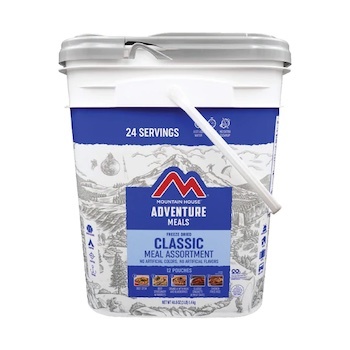
Purchase freeze-dried entrées for each person in your family. Most freeze-dried entrées provide three average servings or two large servings. So, for two weeks, you would need about six freeze-dried dinner entrées per family member.
Freeze-dried foods are my first choice for dinner entrées in an emergency because of their convenience. True, they are expensive, about like eating at a fast-food restaurant. I have tried several brands, and I keep coming back to Mountain House. Some of the other brands are too highly seasoned for my taste. Try several brands and decide for yourself which brands you prefer.
Don’t confuse these entrées with dehydrated food meals that may claim to be freeze-dried but are actually a combination of dry and dehydrated foods with a maybe a few morsels of freeze-dried ingredients mixed in. Check the labels.
OPTION 2
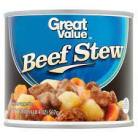
Purchase a variety of canned entrée meals. Aim for fourteen servings per family member. That equals about eight to twelve cans per person—check the number of servings and serving size. Canned soup also fits in this category.
Canned entrées are less expensive than freeze-dried, are easy to pick up at the grocery store, and come in a lot of varieties. If you haven’t used canned entrées for a while, I suggest that you try a few first and be sure your family will eat them before purchasing more.
OPTION 3
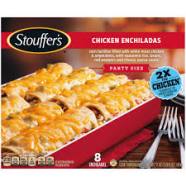
Purchase a variety of frozen individual entrées or family-size meals for your family. Check the labels for the number of servings and the serving size.
Obviously, frozen entrées are not very practical if the power is out, but it is still worth having a few because they are more like homemade. Like canned entrées, they are easy to pick up at the grocery store and come in a lot of varieties.
OPTION 4
Make your own emergency entrées. Home-prepared emergency meals can be pressure canned, frozen, or freeze-dried.
HOME CANNING
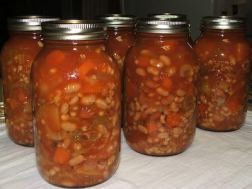
Recipes that are suitable for home canning include meats, including chicken, pork, roast beef, ground meat, sausage, and seafood along with vegetables, stews, bean soups, soup bases. Entrées with starches such as rice or pasta are not recommended for home canning. The Ball Blue Book Guide to Preserving will get you started in home canning. The shelf-life of home-canned foods is three to five years.
HOME FREEZING
Most home-prepared casserole dishes can be frozen. Tightly seal them in family-size or individual packages and vacuum pack them to minimize freezer burn. The storage life is six months to a year.
HOME FREEZE DRYING
A home freeze dryer developed by Harvest Right works as claimed and produces quality freeze-dried food, but the initial investment is costly and the dryer takes up a lot of space. If you are lucky enough to own or have access to a home freeze dryer you can make your favorite casseroles and freeze-dry your own emergency entrées.
Learn More
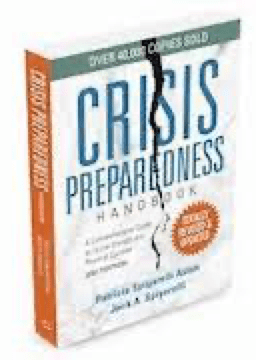
Find out more about storing and preserving foods in Crisis Preparedness Handbook, Third Edition (2020). If you don’t already have a copy, you can find it here on my website CrisisPreparedness.com. Or, read it on Amazon in the Kindle version or hard copy version.



2 thoughts on “Stock Up on Ready-to-Eat Entrées”
I am constantly amazed at the subjects for each week. There are so many I wouldn’t-have thought of myself. I have worried about potential holes in my crisis preparedness and am grateful for the many ideas I’ve learned from the 52 Week Challenge! Thanks!
Thanks so much for your comment! It is gratifying to know that!